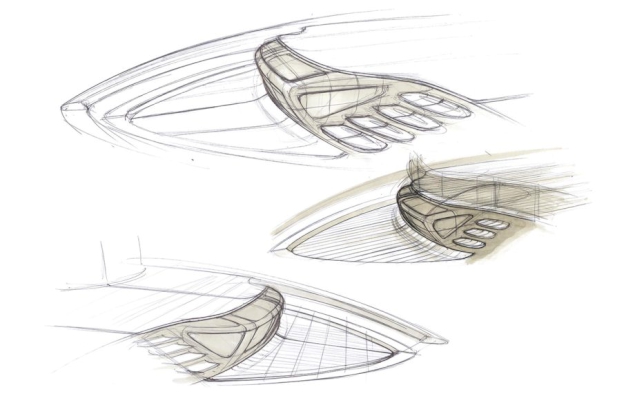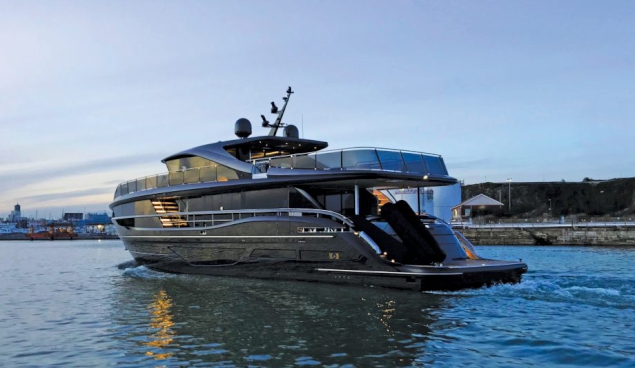
With exclusive access to the designers and naval architects behind the X Class range, MBY reveals what it takes to get from drawing board to dipping the hull...
At the Düsseldorf Boat Show in 2018, MBY editor Hugo and I were ushered to a secret room at the back of the Princess Yachts stand. Our mobile phones and notepads were taken from us before being sealed away inside a code-protected locker and we were led through to a dimly lit room occupied by little more than a glass display case in its centre.
Here, in a private space reserved for the eyes of the press and VIP customers, was a scale model of the X95 Superfly, an entirely new type of Princess and a glimpse into a bold future that looked to push the boundaries of what is achievable in a 30-metre yacht. What does it take to get from that point to the moment where the yacht touches water for the first time, though?
It starts with an idea and a challenge from Princess Yachts’ CEO Anthony Sheriff to his design team: “What’s new”? The former boss of McLaren cars wants to begin a new project with the focus on how it will offer something fresh and different, not only in comparison to competitors but to existing models in the Princess range.
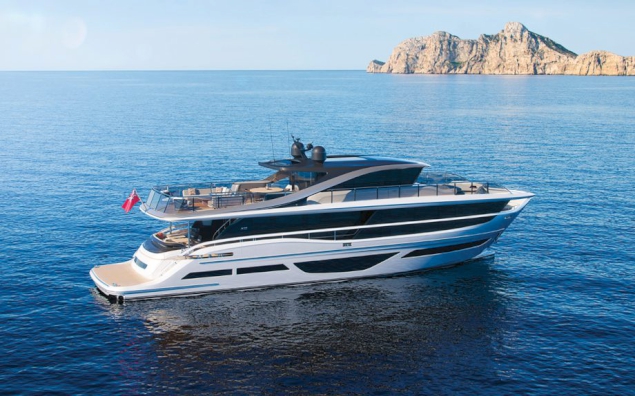
The shipyard already has an established and well-received line-up of semi-custom yachts in its stable in the form of the M Class range so the X Class brief was to offer superior internal volume on a similar waterline length with the emphasis on comfortable and efficient long-distance cruising.
“It’s always exciting starting a new project,” says Andy Lawrence, Princess’s director of design. “The main challenge of this yacht was its proportion. At 95ft long, to be able to get the main saloon and a huge flybridge with an air-conditioned sky lounge encased on top is a challenging proportion to work with.
“From quite an early stage we realised we had the chance to do a new layout that we haven’t looked at before. The proportions meant we had to think again when we penned first profiles, it needed to be something completely different. “There is a design triangle that’s going on with our in-house design team, Olesinski, and we’ve recently introduced Pininfarina into that mix.”
Meeting the challenge
Once the idea for the X95 has been established a brief is sent to Princess’s long standing design partners Olesinski Design in Cowes and Pininfarina in Turin where the teams get to work generating a raft of different concepts that will ultimately be whittled down and presented back to Princess.
In total, Olesinski estimates that over 12,000 of their man-hours went into this project over a three-year period. “From our office alone we created more than 20 different design proposals,” explains Olesinki’s head of design Jonathan Cantrell. “The X95 presented such a unique opportunity and Princess wan’t entirely sure of exactly where it wanted to go with the project so there were lots of different ideas on the table.”
Cantrell joined Olesinksi 13 years ago and has designed 15 Princesses in that time from small V Class boats right up to the 40-metre yacht. Why is the X95 so different to anything he and the team have designed for Princess previously? “This is the first true tri-deck that we’ve been involved with and it’s definitely groundbreaking for Princess,” he says. “Its internal volume sets it apart, this has always been a big thing where every millimeter counts but the X95 takes this to the extreme.”
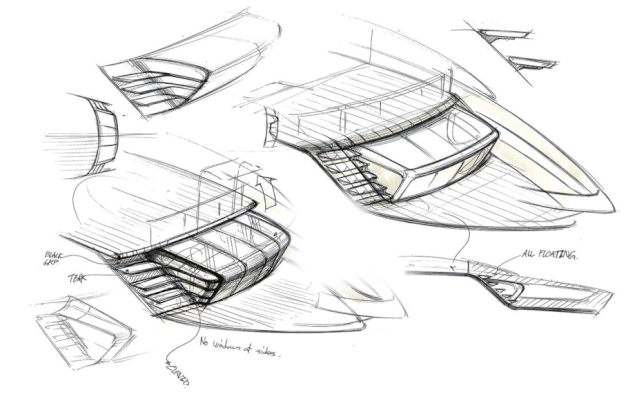
Adding to the complexity of the job was the consideration that the Princess X95 would be platform sharing with the Y95, a more traditional alternative to the X Class created using the same hull and lower deck but with a totally different main deck and more traditional flybridge configuration up top.
“This clearly adds constraints,” Cantrell explains. “We didn’t have the flexibility in the backbone of the yacht that we would usually have but the existence of the more traditional Y95 allowed us to be even more bold with the X95 in not having to adhere to the usual Princess look. “It’s a very different proposition to your traditional Princess so it’s a case of finding a new look that still has the essence of the flowing lines that we developed over the last 14 years.”
Peerless proportions
As well as presenting a styling challenge, the Princess X95’s height combined with a relatively short waterline length lead Olesinksi’s head of naval architecture Gerard Grandcourt to employ new techniques in drawing the yacht’s wave-piercing hull.

“We needed to make sure that we had the waterline beam to support the height and weight because we knew it was going to be a challenge,” he explains. “We went to Ocean Basin at Haslar and built a free-running scale model of the hull to test manoeuvrability and ensure it was safe. It’s the first time we’ve done tank testing with a model that isn’t tethered; free-running models are usually in the realms of superyachts and commercial shipping.”
The X95’s hull shape is significantly different to the M Class range, a result of the drive for efficiency in Princess’s brief. “We wanted to push the boundaries with this hull and keep an open mind,” Grandcourt explains. “We took a look at a variety of different hull forms and used our in-house computational fluid dynamics (CFD) software along with artificial intelligence and machine learning to help run whole sets of hull tests with different parameters but we are always focused on the sea-keeping benefits.”
The results speak for themselves. Compare the Princess X95 with the yard’s own 30 Metre, whose dimensions are almost identical, and you find that with 1,400hp less in total the X95 will achieve the same top speed as the 30 Metre and likely be a whisker faster at the top end. This is purely down to the efficiency of the hull shape and, as a result, the X95’s engines are using 20% less power at 16 knots.
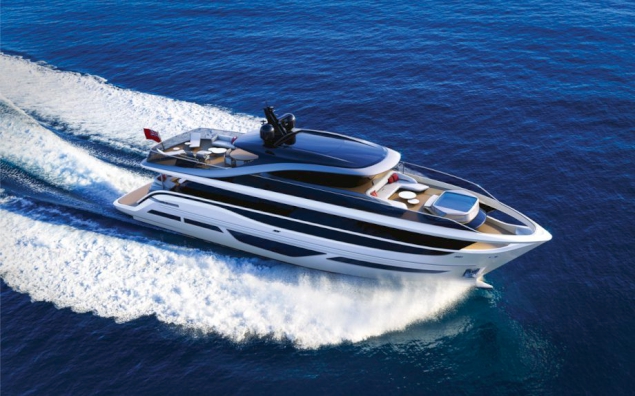
“Sixteen knots is a good cruise speed for her but she is very comfortable at full speed where we have seen 23.5 knots with a 90% fuel load,” Grandcourt adds.
Out of the water you notice joins along the forepeak, piercing section of the hull and transom, which hint at a cunning way to duck beneath the 78ft 7in (24m) threshold and avoid a plethora of rigorous regulations regarding both construction and the running of the yacht. These bolt-ons allow the length overall to stretch to 95ft 5in (29.1m) but ensure that the waterline length of the hull sneaks just below the regulatory margin at 78ft 6in (23.95m).
The X95 demonstrates a significant increase in the amount of deck layouts available in comparison to the 30 Metre. This is driven by customers’ desire to have more control over the layout of their yacht but it’s not easy for a production builder to offer bespoke designs on a model that it would hope to build between six to nine units of per year.
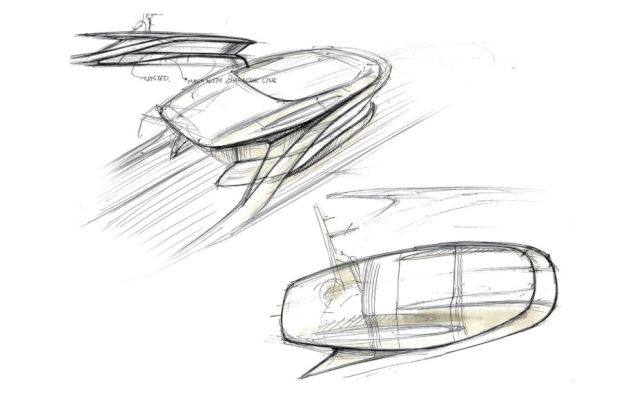
The 30 Metre offers a simple choice between three or four cabins on the lower deck but the X95 has the flexibility of three different layout options on all three decks. The team has tried to account for the requests they predict most customers will ask for but even outside of these standard configurations Princess is willing to accommodate more detailed customisation.
Hull number one, for example, splits the lower deck VIP between a cabin and a gym as opposed to the standard full-beam double, has bespoke furniture in the saloon and master suite and a projector that drops down from the overhang on the flybridge so that the owner and his guests can watch films alfresco.
“We started from scratch with the interior and set a completely new styling language with this yacht,” says Jonny Warden, principal designer at Princess. “What we tried to do was to wrap the furniture into the geometry of the yacht to create a fluid movement of how you would transition through it.”
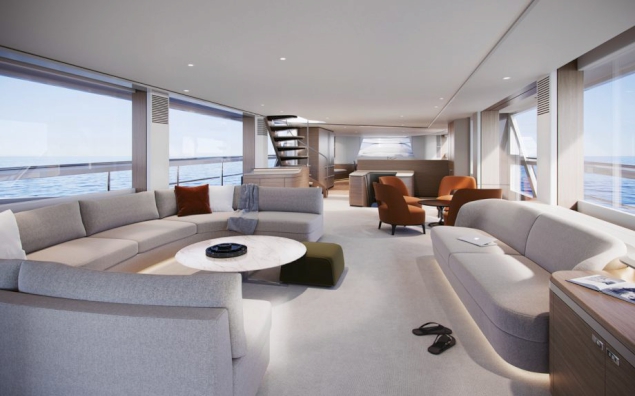
Perfect flow
Wandering around the soon-to-be delivered Hull No 1 at Princess’s South Yard facility, the effect is impressive with gently swooped furniture and bulkheads leading you through an interior that will be bathed in natural light. The glazed area is enormous – unprecedented in anything Princess has done before.
The connection between the deck levels is striking and it’s when you take the internal staircase, just aft of the galley, to the upper deck that the benefits of a true tri-deck design are most obvious. That word “flow” comes to mind again.
Even with rain pounding off the roof of the South Yard shed, I can picture drifting around this deck, reclining on one of the sun loungers, taking a seat at the circular dining table, dropping into the optional foredeck hot tub or retiring to the air-conditioned sky lounge to cool off and watch the sport. The way these three different areas on the same deck connect to each other seamlessly is the essence of what makes this design so clever.
“We couldn’t have foreseen from the outset what this would have looked like at the end,” adds Grandcourt. “That’s the beauty of the design process, you begin with a blank sheet of paper and end up with something that is remarkable, that no one in the world has seen before – a brand new concept.” All that’s left to do now is drive it. Watch this space…
First published in the May 2020 edition of Motor Boat & Yachting.

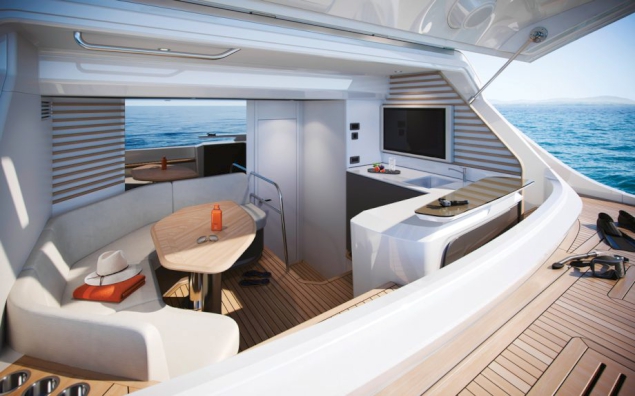
The optional beach club opens directly on to the bathing platform
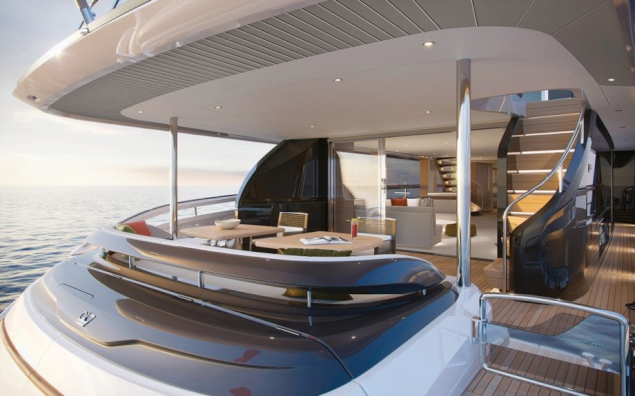
The finalised article in 3D rendering form
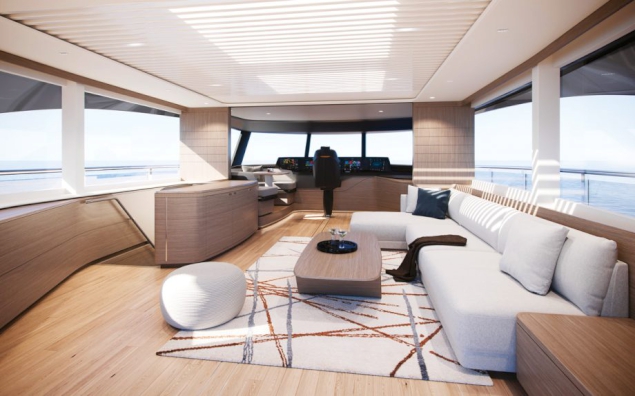
The sky lounge on the top deck, accessed via an internal staircase

The top deck offers huge flexibility and living spaces for all occasions
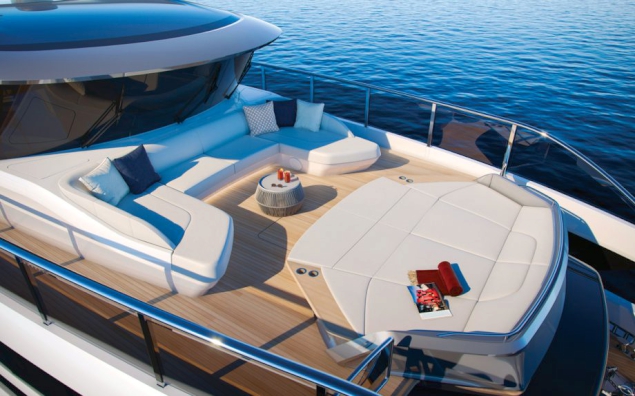
As an option, the forward sun pad can be replaced with a hot tub
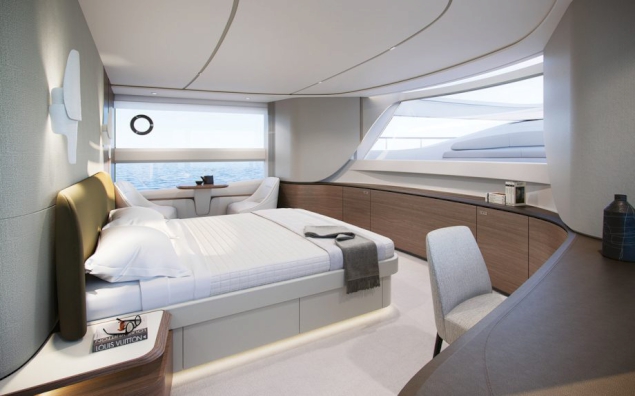
The design team considered adding a set of doors forward in the master suite but were concerned about seaworthiness
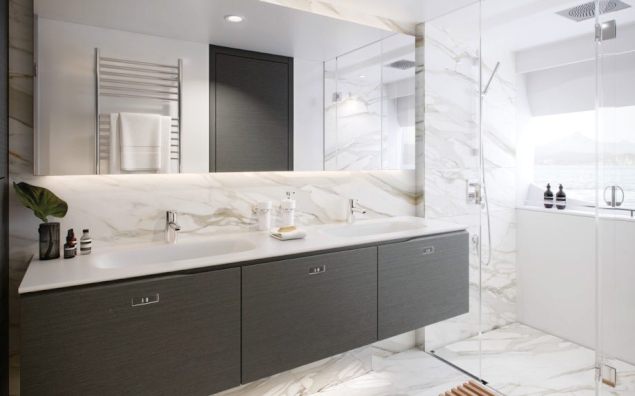
Real stone is used throughout the bathrooms
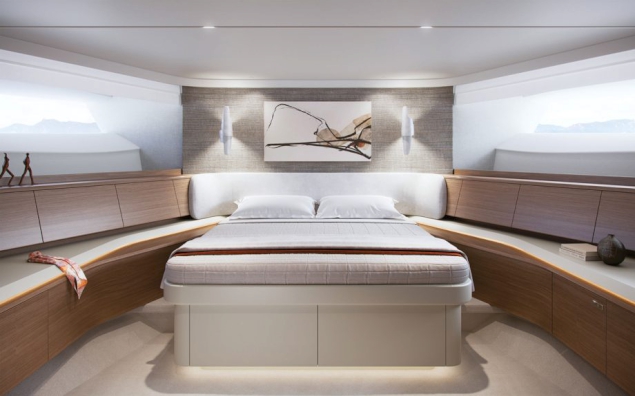
The second VIP stateroom on the lower deck
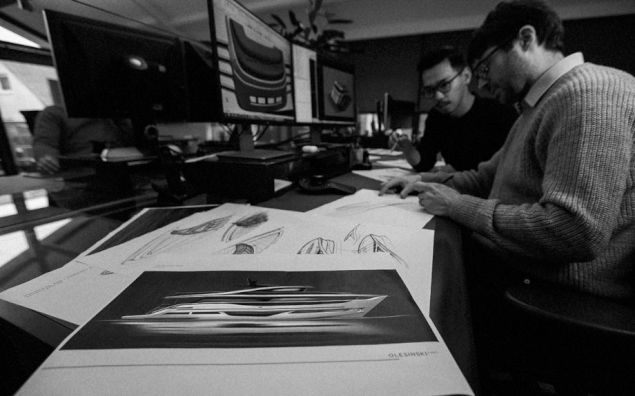
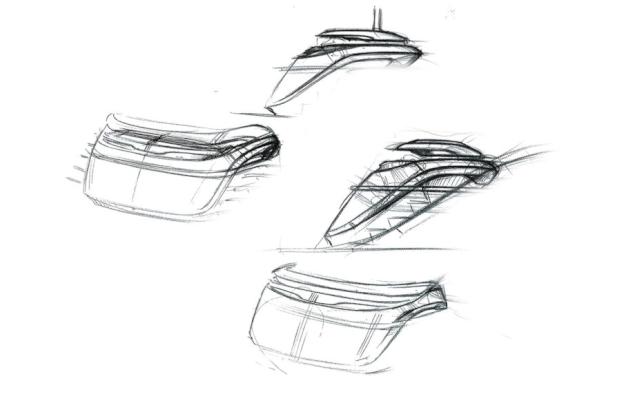
Sketches show the development of the transom design
